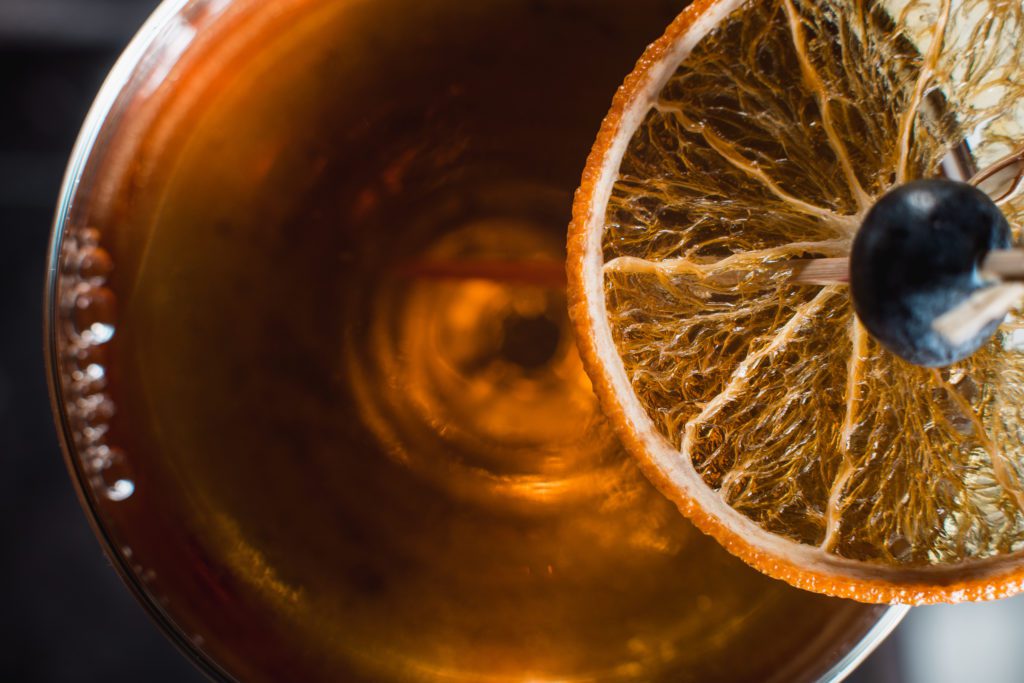Cocktail of the Month: The Boulevardier
By • October 24, 2019 One Comment 1845

One of Woody Allen’s most celebrated films of this century would have to be “Midnight in Paris,” in which a U.S. screenwriter, Gil Pender, travels back in time to the Roaring Twenties every night at midnight, joining the likes of F. Scott and Zelda Fitzgerald, Gertrude Stein and Ernest Hemingway as they make their rounds through the nightlife in the city of light.
Wouldn’t it be marvelous to experience life in Paris during the age of the flapper and all those parties?
Many of the famous haunts from the golden age of Paris are still around, and it’s possible to go there and even imbibe in the same cocktails that were served back in the day.
If you decide that a modern-day Paris escapade is in the cards, you don’t have to look far for a guide. Philip Greene, the author of three cocktail books, recently penned “A Drinkable Feast: A Cocktail Companion to 1920s Paris.”
When I stopped for three days in Paris at the beginning of summer, Phil was the first person I contacted. He sent me a fabulous list of recommendations, but his top suggestion was Harry’s New York Bar.
During Prohibition, Paris became a hot spot for drink lovers from the U.S., especially with a fantastic exchange rate for U.S. dollars. But the bar’s “New York” moniker didn’t come from its overseas clientele.
In 1911, former American jockey Tod Sloan bought a bistro in Paris near the Opera House, converted it into a bar and named it the New York Bar. Sloan had a partner in the Big Apple who owned a bar in Manhattan, and that bar was torn apart and shipped to Paris. The “Harry’s” part came when its barman Harry MacElhone purchased it in 1923 and added his name.
Harry’s has played host to numerous American celebrities, including Hemingway, Humphrey Bogart, Jack Dempsey and Rita Hayworth. It was at the piano bar in Harry’s that George Gershwin wrote “An American in Paris.”
Even today, the bar exudes Americana, with college pennants decorating the interior. Every four years, a U.S. presidential election straw poll is conducted with patrons from the States.
It’s claimed that a number of famous cocktails were invented at Harry’s, including the Bloody Mary, the French 75 and the Sidecar.
However, on my visit, I had one particular tipple on my mind: the Boulevardier. The drink, introduced in MacElhone’s 1927 cocktail book “Barflies and Cocktails,” is a variation on my favorite cocktail, the Negroni. The Boulevardier uses bourbon instead of gin as its base liquor.
According to Greene, the cocktail “combines the stories of three interesting gents who lived in 1920s Paris: Erskine Gwynne, Arthur Moss, and Jeff Kiley.”
The three were founding members of a magazine called the Boulevardier. The magazine, Greene writes, modeled on the New Yorker, was designed to appeal to wealthy Anglo-Americans in Paris.
The cocktail is forged from one ounce each of bourbon, sweet vermouth and Campari. I liked the subtly sweet tang and oaky depth that the bourbon added to the multilayered bitterness of the Campari, while complimenting the vermouth. It was a charming American touch to a timeless Italian drink. And after flying all the way from Southeast Asia, it was a delectable anecdote for my jet lag … requiring more than one.
While the flavor of the Boulevardier is complex, it’s not hard to replicate at home. Its three ingredients are easily findable Stateside.
The Boulevardier
1 oz. bourbon
1 oz. sweet vermouth
1 oz. Campari
Stir all ingredients well with ice in a mixing glass, then strain into a rocks glass containing fresh ice. Garnish with a maraschino cherry.


Garnish orange rind, or cherry?